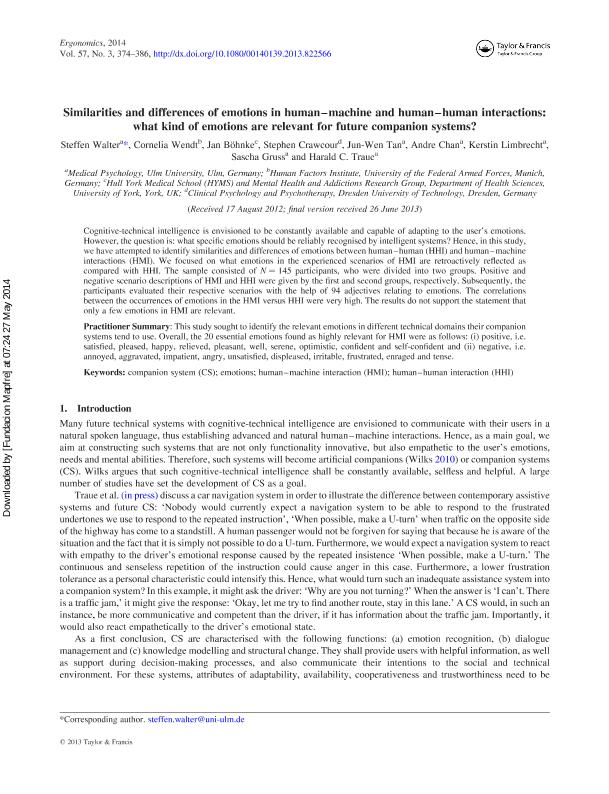Similarities and differences of emotions in human-machine and human-human interactions : what kind of emotions are relevant for future companion systems?

Contenido multimedia no disponible por derechos de autor o por acceso restringido. Contacte con la institución para más información.
| Tag | 1 | 2 | Value |
|---|---|---|---|
| LDR | 00000cab a2200000 4500 | ||
| 001 | MAP20140019335 | ||
| 003 | MAP | ||
| 005 | 20140530130410.0 | ||
| 008 | 140527e20140303esp|||p |0|||b|spa d | ||
| 040 | $aMAP$bspa$dMAP | ||
| 084 | $a875 | ||
| 245 | 0 | 0 | $aSimilarities and differences of emotions in human-machine and human-human interactions$b: what kind of emotions are relevant for future companion systems?$cSteffen Walter...[et.al] |
| 520 | $aCognitive-technical intelligence is envisioned to be constantly available and capable of adapting to the user's emotions. However, the question is: what specific emotions should be reliably recognised by intelligent systems? Hence, in this study, we have attempted to identify similarities and differences of emotions between humanhuman (HHI) and humanmachine interactions (HMI). We focused on what emotions in the experienced scenarios of HMI are retroactively reflected as compared with HHI. The sample consisted of N = 145 participants, who were divided into two groups. Positive and negative scenario descriptions of HMI and HHI were given by the first and second groups, respectively. Subsequently, the participants evaluated their respective scenarios with the help of 94 adjectives relating to emotions. The correlations between the occurrences of emotions in the HMI versus HHI were very high. The results do not support the statement that only a few emotions in HMI are relevant. | ||
| 773 | 0 | $wMAP20100019818$tErgonomics : the international journal of research and practice in human factors and ergonomics$dOxon [United Kingdom] : Taylor & Francis, 2010-$x0014-0139$g03/03/2014 Volumen 57 Número 3 - marzo 2014 |

